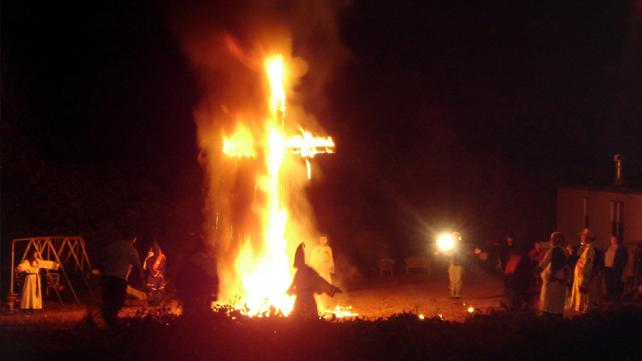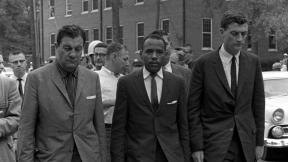
Who started racism in the United States? Racism is the belief that one’s race, skin color, or more generally, one’s group, be it of religious, national or ethnic identity, is superior to others in humanity. History of racism in the American landscape primarily since the European colonization of North America beginning in the 17th century. Various groups have bore the brunt of it, manifested in discriminatory laws, social practices, and criminal behavior directed toward a target group. The following are a list of just a few and their experiences Who started racism in the United States?
Racism against Native Americans: with the Europeans’ arrival on North America’s shores and their systematic plan to subdue and conquer its land, came racism and bigotry against Native Americans. Europeans believed the original inhabitants of America were heathens and savages who needed to be civilized through Christianity and European culture. This led to genocide, mass murder, stolen land, attempts to wipe out Native American traditions, as well as forced assimilation through institutions like residential schools and the establishment of “Indian reservations”. As well, media portrayal of this continent’s first inhabitants as bloodthirsty savages helped justify European abuses against Native Americans. The long-term effects, among others, of this treatment include the fact that today, Native Americans have the highest suicide rate of any group in the United States, according to the National Institute of Mental Health.
Racism against African-Americans: many of the Africans brought to America starting in the 17th century arrived as slaves, kidnapped from their homelands in various parts of Africa. A number of them were known to be royalty and literate. African men, women, and children were stripped of their names and identities, forced to “Christianize”, whipped, beaten, tortured, and in many cases, lynched or hanged at the whims of their white masters, for whom slavery was key to maintaining their vast properties and land. Families were separated through the process of buying and selling slaves. While not all Africans in America were slaves, a large number were, particularly in the southern states. For those Africans in America who were free, discriminatory laws that barred them from owning property and voting, for example, as well as the belief in the intrinsic inferiority of dark-skinned peoples by the dominant white majority, held them back from full equality in the United States.
Although slavery was ultimately outlawed and laws prohibiting discrimination against African-Americans passed, racism against this community remains and is manifested in more subtle ways today. For example, the Washington, DC, Fair Employment Practices Commission has found that blacks face discrimination in one out of every five job interviews. The American Sociological Association notes that, “today employers use different phases of the hiring process to discriminate against minorities (e.g., recruiting from primarily white schools instead of through job training programs) and offer higher status jobs and pay to white employees. Reports of job discrimination against African Americans are correlated with darker complexion, higher education, immigrant status, and young age.”.
Japanese-Americans: with Japan’s December 1941 bombing of Pearl Harbor in Hawaii, racism against Japanese-Americans intensified. Like Muslims after the 9/11 attacks, Japanese-Americans were targets of harassment, discrimination, and government surveillance. Members of the community lost homes, jobs, and businesses. But the worst blow was the February 1942 Executive Order signed by President Franklin D. Roosevelt that authorized the internment of Japanese-Americans. They were now deemed enemies of the state. Over half of the 120,000 Japanese-Americans sent to the camps were born and raised in the U.S. and had never set foot in Japan. Half of those sent to the camps were children.
The Executive Order allowed for the forced exclusion of Japanese-Americans from certain areas to provide security against sabotage and espionage and property. Some of those imprisoned died in the camps due to a lack of proper medical care. Others were killed for not obeying orders.
According to a 1943 report published by the War Relocation Authority, which ran the camps, Japanese-Americans were housed in "tarpaper-covered barracks of simple frame construction without plumbing or cooking facilities of any kind." These overcrowded accommodations were bleak and surrounded by barbed wire. President Roosevelt himself called them "concentration camps."
Jewish -Americans: Although Jews first arrived in America over 300 years ago and enjoyed a certain level of religious freedom, anti-Semitism was acceptable and common socially, as well as legally in some cases. For example, some states in the late 18th century barred those who were not Christian from voting or holding public office. However, these barriers were later removed, especially with the enactment of the Bill of Rights.
As well, during the Holocaust in Europe during the 1940s, a ship of over 900 primarily German Jewish refugees was denied permission to land on U.S. soil, based on the exclusionary Immigration Act of 1924. Only one-third of the passengers, who were forced to return to Europe, survived the genocide of Jews on the continent at the time.
The Ku Klux Kan, one of the most virulent and violent hate groups in America, did not just direct their rage at African-Americans. Jews were also a target.
As well, discrimination against Jews was practiced in some cases in the workforce, and they were not permitted entry into a number of resort areas and social clubs. Colleges also practiced discrimination by limiting their enrolment. In a number of cases, Jews were forbidden from buying certain types of property.
Islamophobia is the term that has been coined to describe the current hostility toward Islam and Muslims in the United States, manifested in prejudice, harassment and discrimination. The Pew Forum on Religion and Public life found last year that positive opinions of Islam among Americans have declined since 2005. Islamophobia intensified after the 9/11 terror attacks, as well as the subsequent wars on Iraq and Afghanistan. Muslims in the United States over the last decade have been subject to 700,000 interviews by the FBI, wiretapping, phone surveillance, and racial profiling. Added to this is the rhetoric of hate and misinformation fueled by so-called terrorism experts, right-wing authors, television and radio talk show hosts and personalities, as well as countless blogs and websites that demonize Islam and Muslims and automatically link them to terrorism.
Islamophobia today is the only acceptable racism left. It remains to be seen how long its cycle will run before there is zero cultural and legal tolerance for it, as is the case with racism against other minority groups in the United States today.
Photo Attribution: "Cross Lighting 2005" by Confederate till Death - English Wikipedia. Licensed under Creative Commons Attribution-Share Alike 3.0 via Wikimedia Commons - http://commons.wikimedia.org/wiki/File:Cross_Lighting_2005.jpg#mediaviewer/File:Cross_Lighting_2005.jpg








Comments
Yeah
I really, really like this text. I wish it was a sort of "like" button.
Location
f a
g aeera
Location
Update ur article
New masters have replaced old masters, research the millenia old Jewish question.
The Jewish supremacists have replaced wasp.
https://direktdemokratihalmstad.wordpress.com/2016/02/11/judaism-has-dec...
Location
Sparkle
Sparkle
Location
Memes
We cut down bird's houses to make bird houses.
Location
BRUH
hella deep
Location
Good article.
Good article.
I want to ask you what is the sources because I need them for my research
Reply to Layla
Yeah. I need the sources too.
Location
Forreal bruh
Forreal bruh I can't find anything
Location
Syrup
I'm from Canada and nobody cares about my opinions because they mean nothing
Location
Pages
Add new comment